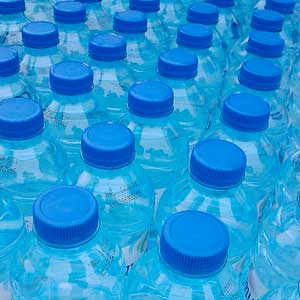 Janelle Sorensen, Healthy Child Healthy World:
Janelle Sorensen, Healthy Child Healthy World:
Plastic bags, plastic bottles, plastic-lined cans – it’s tough to find a food that isn’t packaged in plastic. Yet, what leaches out of the packaging and into our food is often an overlooked component of food safety.
According to Emily Barrett at Environmental Health News:
[A new] study suggests that the problems go far beyond just one culprit or one health effect. Among the many toxic chemicals that can migrate from packaging into food are the endocrine disrupting phthalates and organotins and the carcinogen benzophenone. These compounds are heavily used in food packaging and have known health effects, yet are not routinely tested or regulated in food.
Although some regulations exist to guarantee safe food packaging, the current system does not address concerns posed by endocrine disrupting chemicals. The associated health effects of exposure to hormone altering compounds are many and varied, including immune dysfunction, metabolic disorders (diabetes, thyroid) and reproductive problems.
A number of other notable regulatory flaws include not testing mixtures and a lack of understanding of different effects on different populations – from children to developing fetus to adults to the elderly.
The guidelines, though, do not consider the collective numbers and toxicity – alone or in combination – of all of the chemicals that can leach from the packaging. In a chemical mix, individual health effects may be magnified. Printing, ink, adhesives, recycled cardboard and the plastic containers can all introduce unwanted chemicals into a single food product, creating a mix with additive or synergystic effects. What’s more, the chemicals may degrade over time or form new compounds that migrate into food. These can go entirely unmeasured since it is nearly impossible to identify and test for them all.
What can you do?
- Opt for whole, fresh foods. Not only will you reduce your exposure to contaminants from packaging, you’ll also reduce your exposure to synthetic additives and preservatives found in processed foods (including artificial colors and artificial sweeteners [Aspartame, Acesulfame-K, Saccharin]).
- Make friends with farmers. Learn what’s in season and seek out a local source. Check out this interactive map at Epicurious to find what’s in season in your region and refer to Local Harvest to find farmers and farmers’ markets near you.
- DIY. Ditch frozen and boxed entrees and make your own – it’s really a lot easier than you think. You can even make your own baby food by simply choosing a basic ingredient from your meal and mashing it in a food grinder (some people like using baby food processors like the Beaba Babycook.) Find a slew of easy tips, money-saving ideas and recipes in our Eat Healthy archives.
Leave a Reply